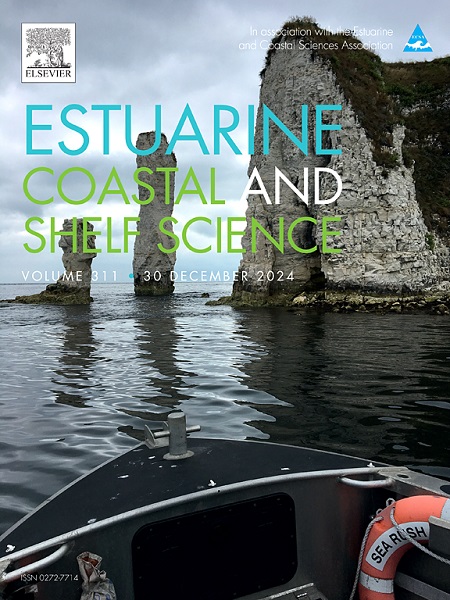Effects of length and robustness on the ingestibility of chain-forming diatoms in Manila clam feeding
IF 2.6
3区 地球科学
Q1 MARINE & FRESHWATER BIOLOGY
引用次数: 0
Abstract
Most bivalves show particle-selectivity during feeding, and particle size is one of the most important factors influencing the pre-ingestive selection. Diatoms are a major taxon of phytoplankton of inner bays and are considered to form an important food source for suspension-feeding bivalves including Manila clam. However, it remains unclear whether these diatoms are always suitable food for bivalves, because very long, probably difficult to ingest, chain-forming species tend to dominate especially inner bays. We investigated whether Manila clams are able to ingest chain-forming diatoms, and whether the length, robustness of chains affect feeding of clams. In a series of experiments we: 1) compared the mechanical strength of cell–cell bond in chains of two diatom species, Chaetoceros contortus and Eucampia zodiacus, using aeration at several flow rates, and found that cell–cell bond strength is greater in C. contortus; 2) measured feeding rates in clams on the unicellular Chaetoceros sp., robust chain-forming C. contortus, and more fragile chain-forming E. zodiacus, and found the feeding rate on C. contortus to be significantly lower than that on the others; and 3) compared chain length compositions of C. contortus and E. zodiacus before and after feeding by clams, and did not find significant difference in either diatom species. Considering the fine structure of the gill surface and diameter of the oesophageal sinus which determine the upper limit of the ingestible particle size, these results suggest that although the clams are capable of ingesting long and robust chains, they take longer to ingest them than unicellular and fragile chain-forming diatoms.
长度和健壮性对马尼拉蛤饲养中链状硅藻消化率的影响
大多数双壳类动物在摄食过程中表现出颗粒选择性,而颗粒大小是影响摄食前选择的最重要因素之一。硅藻是内湾浮游植物的主要分类群,是马尼拉蛤等悬浮食性双壳类的重要食物来源。然而,目前尚不清楚这些硅藻是否总是适合双壳类动物的食物,因为非常长,可能难以摄入,形成链状的物种往往占主导地位,特别是内湾。我们调查了马尼拉蛤是否能够摄入链状硅藻,以及链的长度和坚固性是否影响蛤的摄食。在一系列实验中,我们:1)在不同曝气速率下,比较了弯毛藻(Chaetoceros tortus)和黄原藻(Eucampia zodiacus)两种硅藻的细胞-细胞键链的机械强度,发现弯毛藻的细胞-细胞键强度更大;2)测定了蛤蜊对单细胞毛藻、结实型弯角毛藻和较脆弱型弯角毛藻的取食率,发现弯角毛藻的取食率显著低于其他三种;3)比较了两种硅藻被蛤取食前后的链长组成,均未发现显著差异。考虑到鳃表面的精细结构和食道窦的直径决定了可摄取的颗粒大小的上限,这些结果表明,尽管蛤蜊能够摄取长而坚固的链,但它们比单细胞和脆弱的链状硅藻需要更长的时间来摄取它们。
本文章由计算机程序翻译,如有差异,请以英文原文为准。
求助全文
约1分钟内获得全文
求助全文
来源期刊
CiteScore
5.60
自引率
7.10%
发文量
374
审稿时长
9 months
期刊介绍:
Estuarine, Coastal and Shelf Science is an international multidisciplinary journal devoted to the analysis of saline water phenomena ranging from the outer edge of the continental shelf to the upper limits of the tidal zone. The journal provides a unique forum, unifying the multidisciplinary approaches to the study of the oceanography of estuaries, coastal zones, and continental shelf seas. It features original research papers, review papers and short communications treating such disciplines as zoology, botany, geology, sedimentology, physical oceanography.

 求助内容:
求助内容: 应助结果提醒方式:
应助结果提醒方式:


